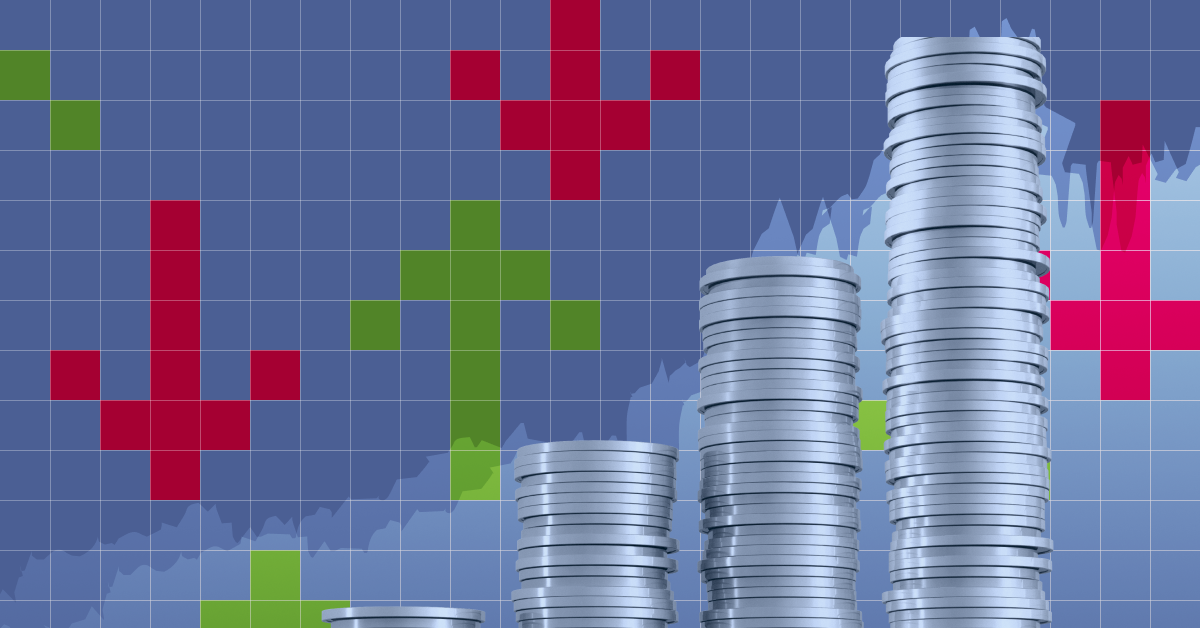
Almost universally, investors want the best returns they can get. Individual investors seek the best returns on their individual stock investments; companies, meanwhile, seek the best returns on their invested capital, or ROIC.
We went searching for companies that’ve done well according to both definitions of “return on investment” in the past. Specifically, we screened for:
- Stocks that’ve returned more than the Morningstar US Market Index on an annualized basis during the trailing 10-year period.
- Companies with average three-year fiscal ROICs exceeding 20%.
- Companies with wide or narrow Morningstar Economic Moat Ratings.
- Stocks that are trading at least 20% below Morningstar’s fair value estimates.
The five stocks here tick all those boxes. While we can’t predict whether these companies and their stocks will continue to generate top returns on investment, we do expect them to be competitive during the coming decade given their economic moat ratings and valuations today.
5 Ultracheap Stocks to Buy With the Best Return on Investment
These quality stocks of companies with solid ROICs have beaten the market during the past decade—and they’re significantly undervalued, too.
- Teradyne (TER)
- Taiwan Semiconductor Manufacturing (TSM)
- Skyworks Solutions (SWKS)
- MarketAxess (MKTX)
- Edwards Lifesciences (EW)
Here are some key metrics about each stock, along with insights from our analysts. Data is as of Nov. 28, 2023.
Teradyne
- Price/Fair Value: 0.62
- Morningstar Economic Moat Rating: Wide
- Morningstar Capital Allocation Rating: Standard
- Trailing 10-year annualized return: 18.66%
- Average fiscal three-year ROIC: 33.06%
- Industry: Semiconductor Equipment & Materials
The most undervalued stock on the list with the best return on investment, Teradyne is trading 38% below our fair value estimate of US$147. The firm’s primary semiconductor testing market is weighed down today by modest smartphone demand and a downturn in the memory chip market. We nevertheless think the company is well-positioned to benefit from a cyclical rebound and view shares as significantly undervalued, argues Morningstar analyst William Kerwin.
Teradyne is a heavyweight supplier of automated test equipment for semiconductors, boasting market-leading capabilities that run the gamut of chips. It is one of two companies worldwide that can produce testers for the most cutting-edge semiconductors, thanks to robust engineering talent across hardware and software and a structural lead in organic investment. The firm is a vital partner to chipmakers across the industry and has an impressively strong relationship with Apple and Taiwan Semiconductor. Teradyne’s market leadership exhibits itself in industry-leading margins, strong returns on invested capital, and a top market share. We give the firm a wide economic moat rating.
Beyond its top-tier capabilities, we think Teradyne is a strong operator. It appears to have found a good balance between organic investment in development and profitability, and it is a good generator of free cash flow despite its capital intensity. We approve of the firm’s use of extra cash for shareholder returns and opportunistic mergers and acquisitions, which have recently focused on the high-growth industrial automation market. We also applaud Teradyne’s strong balance sheet, which shows a net cash position.
We expect Teradyne to complement continued investment in chip testing with investment in the high-growth robotics market. We think the firm’s collaborative and autonomous robots will augment top-line growth over the next five years as well as be accretive to gross margins. In semiconductor testing, Teradyne will benefit from increasing complexity, specifically the expansion of 3D NAND memory capacity and advancements to new architectures and smaller geometries in digital chips, like 3-nanometer platforms and gate-all-around transistors. We also expect domestic onshoring and capacity expansion to generate demand for the firm’s automated test equipment in the medium term. We view Teradyne as an agnostic play on the global chipmaking market with muted cyclicality arising from its vital role in the supply chain and nature as a capital expense at customers.
William Kerwin, Morningstar analyst
Taiwan Semiconductor Manufacturing
- Price/Fair Value: 0.70
- Morningstar Economic Moat Rating: Wide
- Morningstar Capital Allocation Rating: Exemplary
- Trailing 10-year annualized return: 20.21%
- Average fiscal three-year ROIC: 26.13%
- Industry: Semiconductors
Taiwan Semiconductor stock boasts the best trailing 10-year annualized return on our list. Management also earns an Exemplary Morningstar Capital Allocation Rating. We think the management of this wide-moat company has done an excellent job generating excess ROIC and return on equity figures, both averaging over 20% for the past decade. The firm’s earnings have also been far more stable than those of its competitors, observes Morningstar analyst Phelix Lee. The topper: The stock is ultracheap, trading 30% below our US$139 fair value estimate.
Taiwan Semiconductor Manufacturing Co. is the world’s largest dedicated contract chip manufacturer, or foundry. It makes integrated circuits for customers based on their proprietary IC designs. The firm has long benefited from semiconductor firms around the globe transitioning from integrated device manufacturers to fabless designers. TSMC, like all foundries, assumes the costs and capital expenditures of running factories amid a highly cyclical market for its customers. Such cyclicality stems from the fact that foundries tend to add excessive capacity during times of burgeoning demand, which can result in underutilization during downturns that hampers profitability.
The rise of fabless semiconductor firms has been maintaining the growth of foundries, which has in turn encouraged increased competition. However, most of these newer competitors are confined to low-end manufacturing due to prohibitive costs and engineering know-how associated with the leading-edge technology. To prolong the excess returns enabled by leading-edge process technology, or nodes, TSMC initially focuses on logic products, mostly used on central processing units and mobile chips, then focuses on more cost-conscious applications. This strategy has been successful, illustrated by the fact that the firm’s one of the two foundries still possessing leading-edge nodes when dozens of peers lagged.
We note two long-term growth factors for TSMC. First, the consolidation of semiconductor firms is expected to create demand for integrated systems made with the most advanced nodes. Second, organic growth of artificial intelligence, Internet of Things, and high-performance computing applications may last for decades. AI and HPC play a central role in quickly processing human and machine inputs to solve complex problems like autonomous driving and language processing, which accentuated the need for more energy-efficient chips. Cheaper semiconductors have made integrating sensors, controllers, and motors to improve home, office, and factory efficiency possible.
Phelix Lee, Morningstar analyst
Skyworks Solutions
- Price/Fair Value: 0.71
- Morningstar Economic Moat Rating: Narrow
- Morningstar Capital Allocation Rating: Exemplary
- Trailing 10-year annualized return: 15.27%
- Average fiscal three-year ROIC: 20.30%
- Industry: Semiconductors
Yet another semiconductor company on our list of undervalued stocks to buy with the best return on investment, Skyworks Solutions maintains a narrow economic moat rating and earns high marks for how its management has allocated capital. Although the company is facing a soft demand environment today, we think the resiliency of Skyworks’ radio frequency chip business and earnings power is underappreciated, says Morningstar director Brian Colello. The stock is trading 29% below our US$133 fair value estimate.
Skyworks Solutions is a leading supplier of a variety of radio frequency components to smartphone makers and a host of other electronics device makers. Although the company faces an intense competitive landscape, it should thrive as the handset industry focuses on 5G devices, which we expect to require higher radio frequency dollar content per phone.
Skyworks earns the majority of its revenue from mobile products, mostly from a variety of products that switch, filter, and amplify wireless signals in smartphones. Given the rise of advanced 5G-enabled smartphones, which use a wider variety of wireless spectrum and frequency bands than in prior generations of networks, RF content per phone has grown exponentially in recent years, lifting Skyworks and its RF competitors. 5G devices are even more technologically complex than 4G ones, making Skyworks’ expertise even more valuable to device makers. Meanwhile, Skyworks is one of the few RF firms with the scale to supply hundreds of millions of RF products per year, giving it a leg up on new entrants. That said, Skyworks’ RF prospects might not be rosy forever, given intense competition in RF chips and a customer base of only a handful of tech titans that could put pricing pressure on Skyworks and other RF chipmakers. The company has significant customer concentration with Apple (about 59% of fiscal 2022 revenue), and it would be a catastrophic blow to Skyworks if it were to ever miss out on a future iPhone design cycle. We also don’t see a winner-take-all situation in the smartphone RF space, as handset makers have split their business enough among these RF firms to prevent a single firm from dominating the market over time. We’re highly encouraged by Skyworks’ diversification into nonhandset end markets, especially as connectivity is becoming more ubiquitous in other industries such as automotive. Although the firm has seen robust growth from these end markets, we suspect that its fortunes will remain tied to the wireless industry for quite some time.
Brian Colello, Morningstar director
MarketAxess
- Price/Fair Value: 0.76
- Morningstar Economic Moat Rating: Wide
- Morningstar Capital Allocation Rating: Exemplary
- Trailing 10-year annualized return: 13.76%
- Average fiscal three-year ROIC: 25.53%
- Industry: Capital Markets
The third of three wide-moat stocks on our list, MarketAxess is trading 24% below our US$305 fair value estimate. We think management has invested the firm’s capital wisely and has a significant cash pile on hand to invest more capital in the business or make an acquisition, says Morningstar analyst Michael Miller. The business has experienced a downward pressure on pricing since the Federal Reserve began raising interest rates, which has weakened results this year.
MarketAxess operates the leading platform for the electronic trading of corporate bonds. While the company is primarily focused on U.S. securities, 30%-40% of its corporate bond trading volume comes from emerging-markets debt and Eurobonds, giving the company a strong international presence. MarketAxess also offers trading in U.S. Treasuries and municipal bonds, bolstering its efforts in these sectors through the acquisitions of LiquidityEdge and MuniBrokers in 2019 and 2021, respectively. That said, corporate bonds are the core of MarketAxess’ business, which we expect will remain true, a consequence of being a relative newcomer to the Treasury trading market and the smaller size of the municipal debt market.
Fixed-income markets globally are increasingly moving away from voice-negotiated trading toward electronic trading platforms as the liquidity and workflow enhancement of these electronic networks promises to lower implicit and explicit trading costs for increasingly expense-conscious firms. As MarketAxess rolls out new features such as automated trade execution and expands its Open Trading all-to-all network, the cost and liquidity advantages of electronic trading networks over traditional methods continues to increase.
We expect 2023 to be a better year for growth for MarketAxess as last year the company faced dual headwinds from both low corporate bond issuance levels and unfavorable mix shift creating downward pressure on its average fees. While these headwinds are still a factor, the company is benefiting from higher trading volume industrywide as rising interest rates lead to more volatility in fixed-income markets. That said, MarketAxess continues to face significant competition in the electronically traded U.S. corporate bond market from both Tradeweb and the smaller Trumid, which has led its investment-grade bond market share to be relatively stagnant in recent years. To make matters worse, while MarketAxess retains a dominant position in the U.S. high-yield bond market, performance has been disappointing in recent months. We still see meaningful secular growth drivers for MarketAxess, but competition will be a headwind to volume growth.
Michael Miller, Morningstar analyst
Edwards Lifesciences
- Price/Fair Value: 0.78
- Morningstar Economic Moat Rating: Narrow
- Morningstar Capital Allocation Rating: Exemplary
- Trailing 10-year annualized return: 19.95%
- Average fiscal three-year ROIC: 21.61%
- Industry: Medical Devices
Rounding out our list of ultracheap stocks to buy with the best return on investment, Edwards Lifesciences competes in the somewhat mature surgical heart valve market, where it is a leader, says Morningstar senior analyst Debbie Wang. Interestingly, she adds that shares of this narrow-moat company historically have tended to trade above our fair value estimate, but not today: The undervalued stock is trading 22% below our US$86 fair value estimate.
Over the last two decades, Edwards Lifesciences has demonstrated that it knows how to maintain leadership through innovation of tissue heart valves. Edwards remains the dominant force in surgical heart valves and minimally invasive valve therapy—one of the hottest areas in cardiac devices.
Edwards is committed to delivering meaningful innovation. To stay on the cutting edge, it spends substantially on R&D. These efforts have also resulted in an impressive 27-percentage-point gross margin improvement as Edwards shifted to higher-margin transcatheter heart valve products. Although the firm is significantly smaller than close competitors Medtronic and Abbott in terms of sales, it remains the global leader in its core business of heart valves, both surgical and transcatheter. The firm maintains a leadership position in critical-care monitoring equipment to complement its heart valves.
While Edwards did not regularly engage in serial acquisition, the firm has made a series of purchases of transcatheter mitral valve technologies in order to get a jump on the next wave of innovation. The firm remains on the leading edge with the dominant balloon-expanded Sapien transcatheter aortic valve. It is also in a strong position to commercialize transcatheter mitral repair and replacement products, such as Pascal, and other devices for tricuspid valve replacement. Edwards is poised to ride the wave as new technology shifts more valve replacements to the transcatheter approach, especially as more clinical data support the efficacy and safety of these products.
Having said that, we still anticipate some potential bumps in the road. Edwards has already taken shots at transcatheter mitral valves before with little success. It is a challenging area, given how heterogeneous the condition is. The economics behind transcatheter aortic valve replacement remain less attractive than surgical valves to many hospitals, though this has been easing. This market is also becoming more crowded with Medtronic, Abbott, and Boston Scientific in the fray. Nonetheless, we think the longer-term clinical trend will shift toward transcatheter technologies, and Edwards is well positioned to succeed
Debbie Wang, Morningstar senior analyst
What Is Return on Invested Capital?
Return on invested capital, or ROIC, measures the profitability of a company in relation to the capital it has invested. Expressed as a percentage, ROIC allows investors to compare how efficient one company is versus another when it comes to turning capital into profits. A company with a higher ROIC is more efficiently using its capital than a company with a lower ROIC is. In the case of the screening used in this article, we were focusing on companies that’ve generated at least US$0.20 of profit on every dollar of capital invested, on average, during the past three years.
Why look back at three years’ worth of ROIC rather than examine just one year?
“When analyzing a company’s historical return on invested capital, we prefer using a three-year average,” explains Morningstar U.S. market strategist David Sekera. “ROIC can be impacted by a wide range of factors in any one year. Such factors could include nonrecurring charges, changes in capital structure, and merger activity. The longer average also helps to smooth out changes in profitability for especially cyclical companies.”












.png)









